M1 Abrams Tanks Have Arrived In Ukraine
M1 Abrams tankThe first of Ukraine’s long-awaited American-supplied M1 Abrams main battle tanks have arrived in the country, the U.S. Department of Defense has confirmed to The War Zone. While we don’t know how many of the tanks have been delivered to Ukraine at this point, Washington has committed to sending 31 of the M1A1 versions and these will surely be committed soon to Kyiv’s ongoing counteroffensive.The Pentagon provided The War Zone with the following statement:“As President Zelensky said earlier today, the first batch of the 31 Abrams tanks have arrived in Ukraine. The mere presence of Abrams tanks serves as a potent deterrent. By having these tanks in their arsenal, the Ukrainian Army can more effectively discourage aggressive actions.Providing the Abrams tanks signifies a tangible commitment to Ukraine’s defense and stability, underscoring U.S. support for its partners facing external pressures. We will continue to focus on what we can do to help Ukraine succeed on the battl
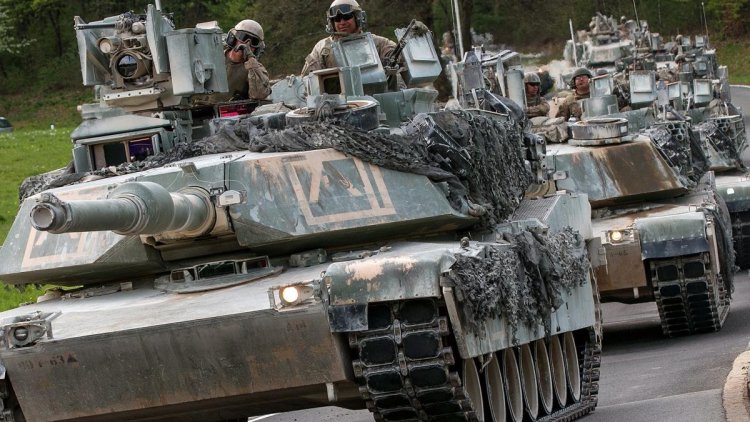
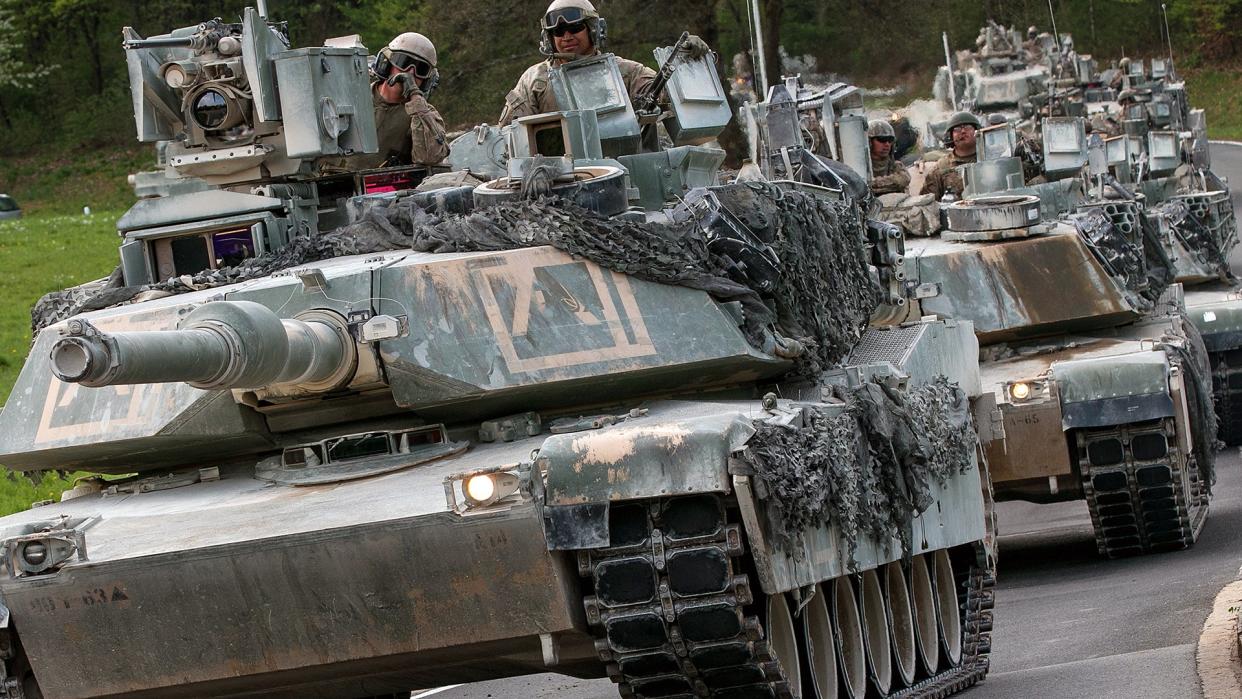
The first of Ukraine’s long-awaited American-supplied M1 Abrams main battle tanks have arrived in the country, the U.S. Department of Defense has confirmed to The War Zone. While we don’t know how many of the tanks have been delivered to Ukraine at this point, Washington has committed to sending 31 of the M1A1 versions and these will surely be committed soon to Kyiv’s ongoing counteroffensive.
The Pentagon provided The War Zone with the following statement:
“As President Zelensky said earlier today, the first batch of the 31 Abrams tanks have arrived in Ukraine. The mere presence of Abrams tanks serves as a potent deterrent. By having these tanks in their arsenal, the Ukrainian Army can more effectively discourage aggressive actions.
Providing the Abrams tanks signifies a tangible commitment to Ukraine’s defense and stability, underscoring U.S. support for its partners facing external pressures. We will continue to focus on what we can do to help Ukraine succeed on the battlefield and protect its people.”
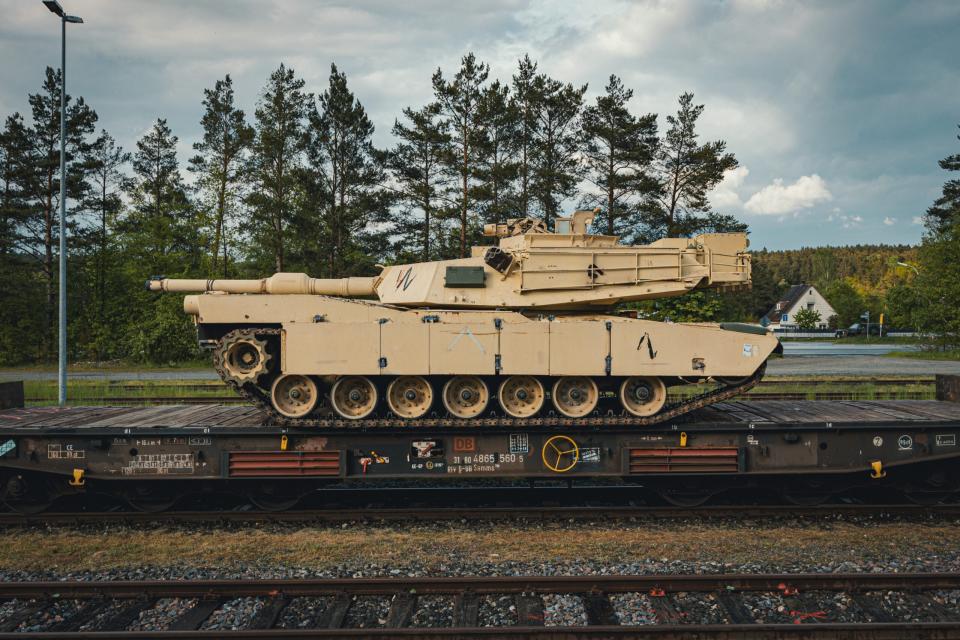

Earlier today, Ukrainian President Volodymyr Zelensky took to X, formerly known as Twitter, to post the following statement as part of his daily update:
“Good news from Defense Minister Umerov. Abrams are already in Ukraine and are preparing to reinforce our brigades. I am grateful to our allies for fulfilling the agreements! We are looking for new contracts and expanding the geography of supply.”
https://www.twitter.com/ZelenskyyUa/status/1706277260070719921?s=20
Meanwhile, a report in today’s New York Times cited two unnamed U.S. defense officials, who say the tanks arrived in Ukraine yesterday, with more to be sent in “the coming months.”
In regards to the likely number of Abrams now in Ukraine, Politico had previously reported that the first 10 of these tanks would arrive in Ukraine in mid-September, with the remaining 21 also due to arrive in-country “during the fall.”
Only last week, President Joe Biden and the U.S. Secretary of Defense Lloyd J. Austin III had said the Abrams tanks would be sent to Ukraine “within days.”
https://www.twitter.com/DefenceU/status/1704091708907024697?s=20
At the beginning of this month, we reported that a cadre of Ukrainian crews had completed their training on the M1 at different U.S. Army facilities in Germany. That training, with an initial course that lasted 12 weeks, included what was described as a “combined-arms, battalion force-on-force exercise” undertaken at the Hohenfels Training Area in Bavaria. Due to a slight holdup in the delivery of the tanks, Kyiv also requested a block of “proficiency training,” keeping the crews up to speed on their new mounts until they arrived in Ukraine.
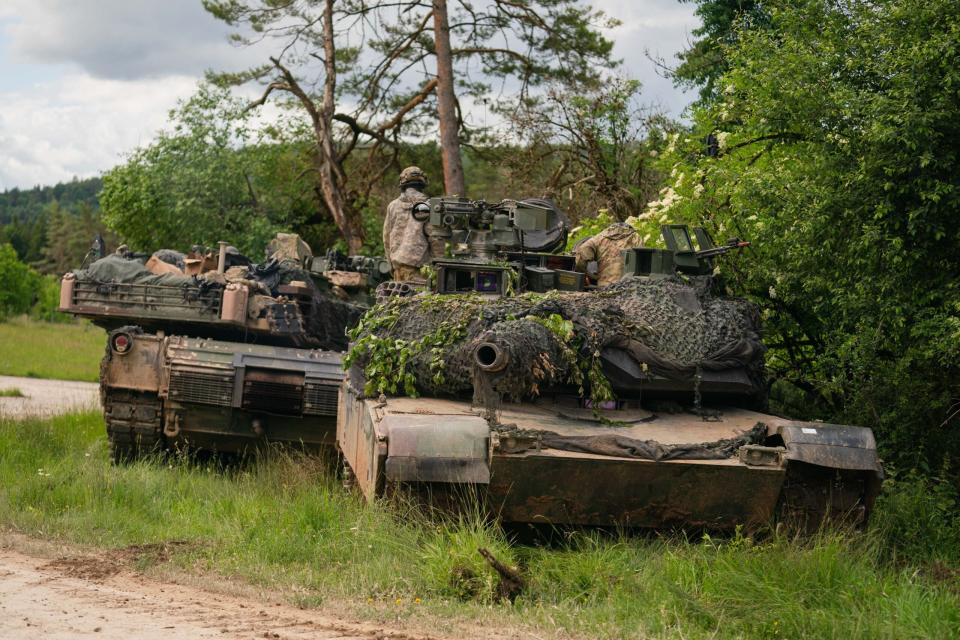

At that point, the first batch of tanks was still undergoing refurbishment and preparation for delivery.
Back in August, U.S. Army Acquisition Chief Doug Bush told reporters that the consignment of Abrams tanks was slated to arrive in Ukraine by “early fall.”
In July, meanwhile, there had been reports that the tanks could arrive on the battlefield sometime in September.
The United States has made efforts to expedite the delivery of Abrams to Ukraine. At an early stage, for example, it was decided that Kyiv would receive refurbished M1A1 variants, rather than newer M1A2 types, as you can read more about here.


While Ukraine long coveted the Abrams, as well as other modern Western tanks, it was only in January this year that President Biden initially approved the delivery of M1s to Ukraine. Previously, this had been ruled out as being too provocative and risking further escalation that would likely see NATO become more embroiled in the conflict.
https://www.youtube.com/watch?v=ZdsloOWMUcQ
There is no doubt that Ukraine has high hopes about what the Abrams will be able to contribute to counteroffensive and we have previously looked in detail at what exactly the M1 can bring to the battlefield in Ukraine.
Simply put, the Abrams is superior to the mainly Soviet-era tanks that constitute the larger part of the Ukrainian Armed Forces fleet, with much better night-fighting potential, and superior levels of crew protection, to name just two advantages.
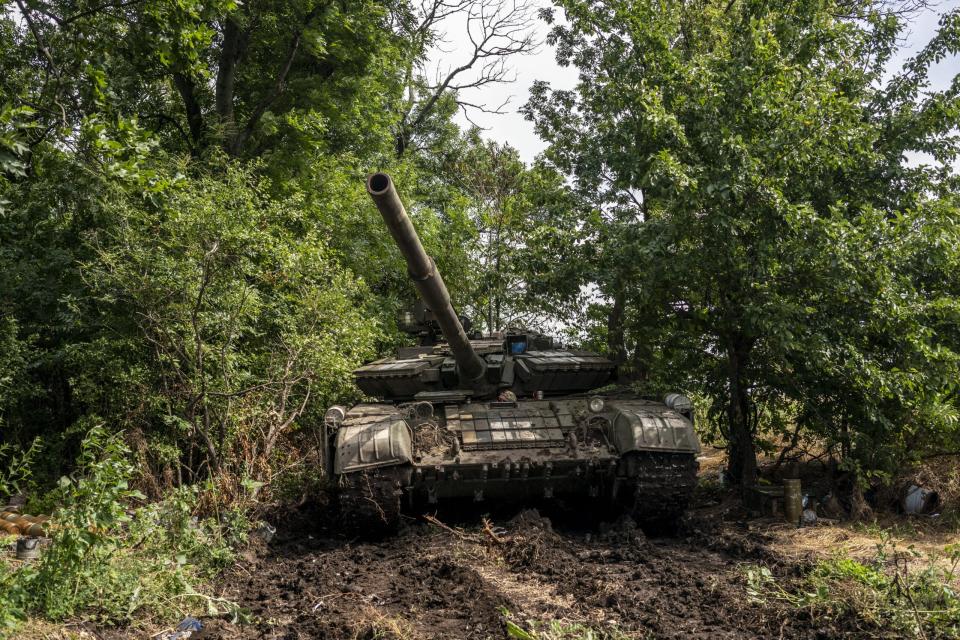

The Abrams is also being supplied with armor-piercing fin-stabilized discarding sabot (APFSDS) ammunition. These rounds fire dart-like penetrators, which are made of depleted uranium (DU) or other dense metals, rather than packing an explosive warhead of some kind. These high-speed darts literally smash their way into enemy armor, with such force that the penetrator becomes a semi-molten projectile that burns its way through, shedding fragments on its way, and causing extreme damage to the interior and its occupants.
https://www.twitter.com/clashreport/status/1697816197608161283?s=20 https://www.youtube.com/watch?v=coWJDfcdR60
At the same time, it’s clear that the Abrams alone won’t be a silver bullet in Ukraine’s slow-moving counteroffensive. After all, examples of the M1 have been lost in various conflicts in the Middle East through the years.
The task at hand is immense, with Russian troops deeply dug into extensive defensive positions along a front line that measures 600 miles or so. These soldiers are protected by extensive minefields, anti-tank obstacles, and trenchworks. Meanwhile, cover is provided by plentiful artillery, loitering munitions, anti-tank guided missiles, as well as helicopter gunships. Russian rotorcraft appear to have inflicted a hefty toll on Ukrainian armor and the first loss of a Ukrainian Abrams — which is almost inevitable — will be played as for its propaganda value by Moscow.
https://www.twitter.com/RALee85/status/1574787713227804672?s=20
In an exclusive interview with The War Zone last week, Lt. Gen. Kyrylo Budanov, commander of Ukraine’s Defense Intelligence Directorate (GUR), said that the Ukrainian Abrams “should be used in a very tailored way for very specific, well-crafted operations.“ Budanov warned: “If they are used at the front line and just in a combined-arms fight, they will not live very long on the battlefield. They need to be used in those breakthrough operations, but very well-prepared.”


With just 31 Abrams committed by the United States so far, Ukraine’s expectations have to be realistic. While it’s certainly possible that more M1s could be pledged to Ukraine at a later stage, in the meantime, the capabilities of these tanks have to be weighed up against the considerable logistics burden that they also bring. There have been concerns from some quarters about Ukraine’s ability to maintain these complex tanks and their complex engines, with some officials citing this as a reason not to provide them to Kyiv.
To help address that logistics challenge, for the Abrams and other complex weapons, the United States has set up the Tele-Maintenance Distribution Cell-Ukraine in Poland. Using encrypted phone calls or messages, the Ukrainian military can request rapid maintenance assistance, including calling up for spare parts and getting expert help while running repairs. Tele-maintenance as a concept has been used, formally and informally, for other weapon systems for some time now.
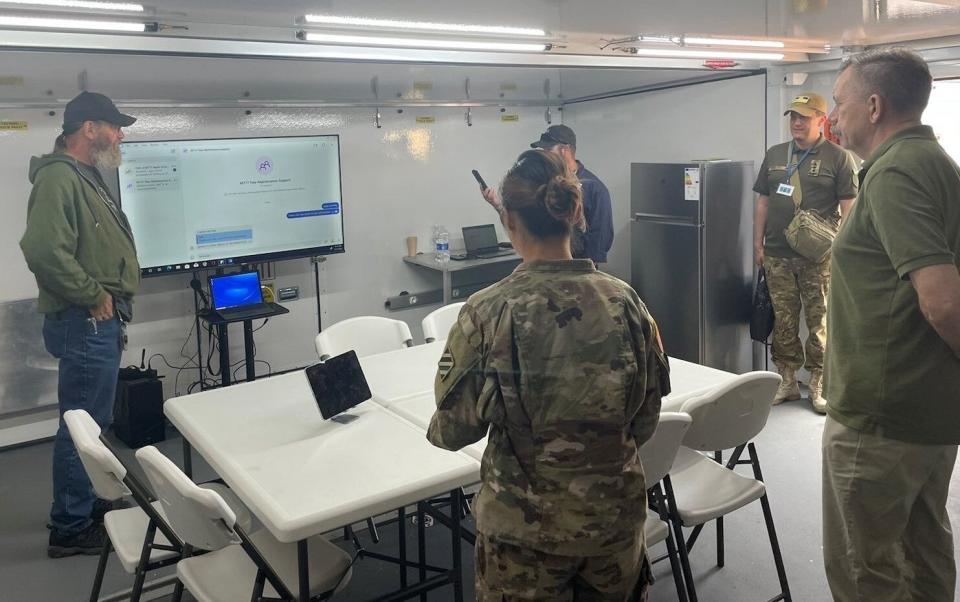

“There will be the issue of sustaining [Abrams] … parts, but it’s also the expertise, you know, to really understand the equipment and how to debug it,” Undersecretary of Defense for Acquisition and Sustainment Bill LaPlante told reporters recently.
At the same time, the M1s are not the only advanced Western tanks delivered to Ukraine, with British-supplied Challenger 2s and German-made Leopard 2s both already involved in the fighting.
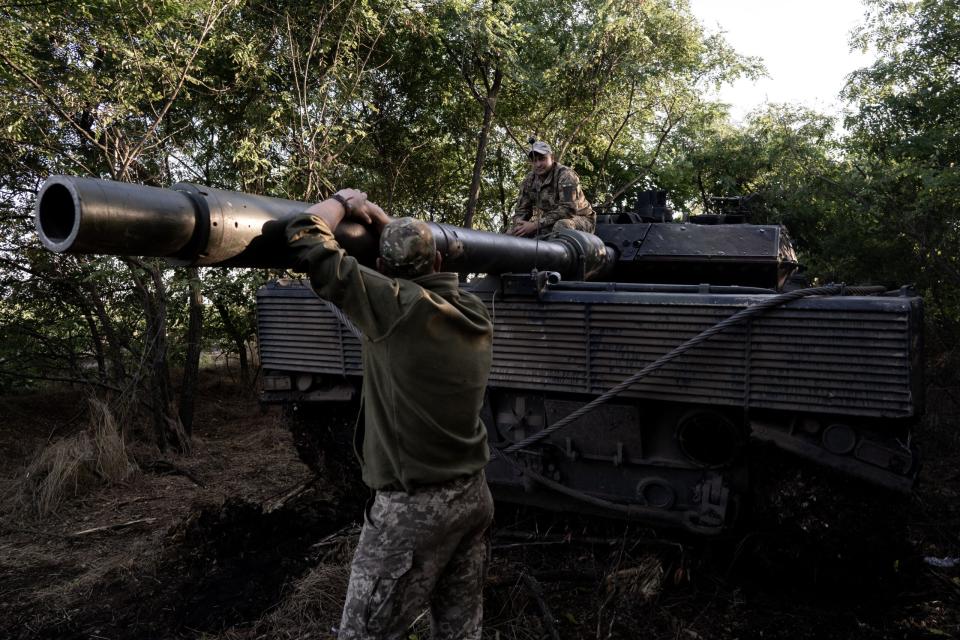

While progress in the counteroffensive may be slow, there has been a steady flow of positive results. Most recently, Ukrainian mechanized forces have, for the first time, breached Russia’s main line of anti-tank ditches and dragon’s teeth obstacles near the village of Verbove in Zaporizhzhia Oblast. You can read more about this development here.
It’s breakthroughs like these in which the Abrams could make a real difference, their superior firepower, protection, and mobility helping the Ukrainians to penetrate wider and further into these breaches in the Russian lines. On the other hand, the M1 is a notably large and heavy tank and there are questions about its general mobility, especially when it comes to crossing bridges, etc.
https://www.twitter.com/Arslon_Xudosi/status/1530626746353172482?s=20
“The Ukrainian T-84 weighs in at 46-51 tons; the M1A1 at 63 tons,” veteran U.S. Army tanker Erik Albertson told The War Zone. “The weight can be problematic when crossing bridges not designed to sustain that much weight.”
Regardless, we surely now won’t have to wait long before the M1 Abrams — designed initially for fighting superior numbers of Soviet tanks on the Central Front — goes into battle for the first time in Europe.
Contact the author: [email protected]
What's Your Reaction?










![[World] Taliban order Afghanistan's hair and beauty salons to shut](https://www.9020blog.com/uploads/images/202307/image_650x433_64a410c131426.jpg)


